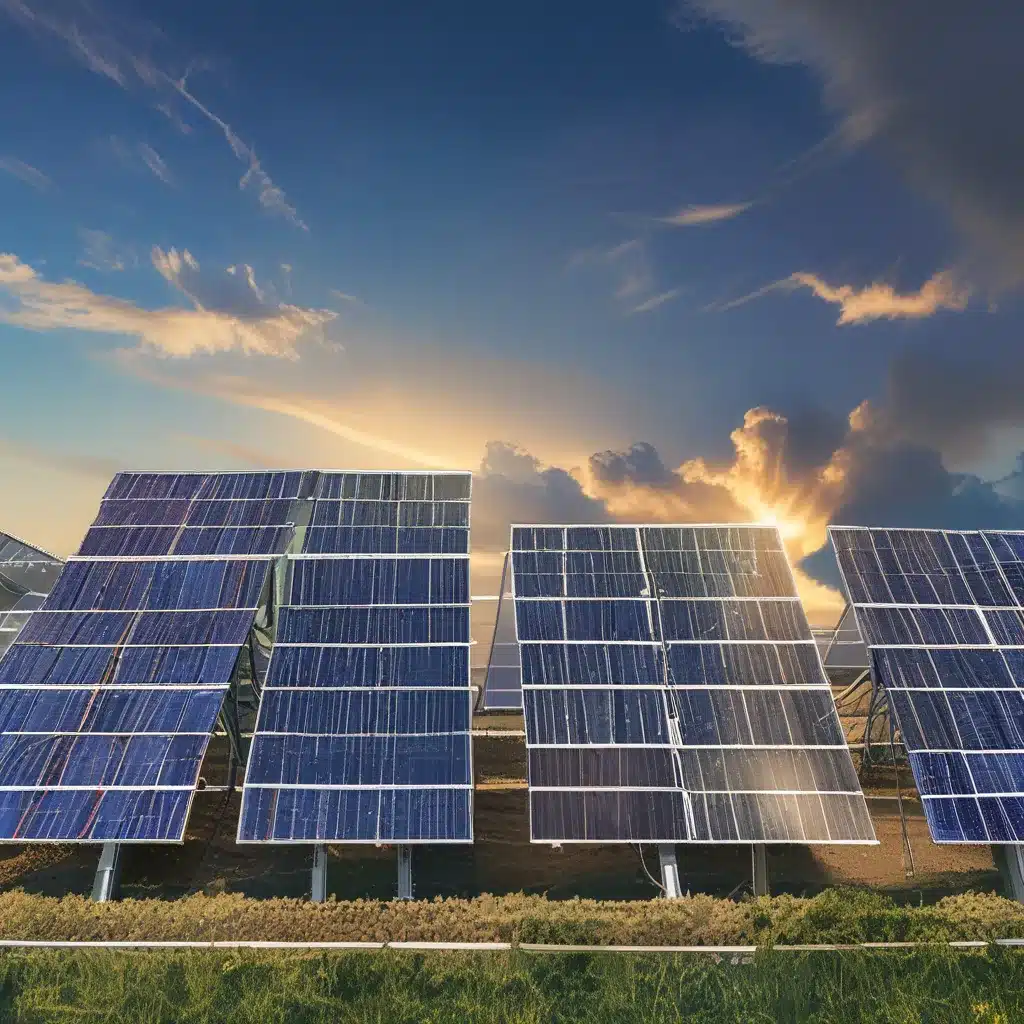
Demystifying the Solar Panel Equation: A Personalized Approach
Ah, the age-old question that plagues every aspiring solar homeowner – how many solar panels do I actually need? It’s a tricky one, I’ll admit. But fear not, my solar-curious friend, for I’m here to guide you through this seemingly complex conundrum, one step at a time.
Let’s start with a little background. As a proud solar panel owner myself, I can attest to the life-changing benefits of harnessing the power of the sun. Imagine bidding farewell to those pesky utility bills, knowing that your home is fueled by a renewable, eco-friendly source of energy. Sounds pretty sweet, right? But before you can bask in the glory of your solar-powered abode, you need to figure out the perfect panel setup.
Determining Your Energy Needs
The first step in this solar-tastic journey is to understand your energy consumption. Think of it as a personal energy audit – except instead of a stuffy government agent, you’ve got me, your friendly neighborhood solar expert, leading the charge.
To get started, I recommend taking a close look at your past 12 months of utility bills. Add up the total kilowatt-hours (kWh) of electricity you’ve used over the year, and then divide that number by 12 to get your average monthly usage. This information is crucial, as it will help us determine the size of the solar array you’ll need to power your home.
Now, I know what you might be thinking – “But what if my energy needs change in the future?” Great question! You’re absolutely right to consider that. After all, who knows what kind of high-tech gadgets or energy-guzzling appliances you might add to your home down the line. That’s why it’s always a good idea to plan for a little extra capacity, just in case.
Calculating the Perfect Panel Equation
Alright, now that we’ve got your energy consumption nailed down, let’s dive into the nitty-gritty of solar panel calculations. It’s time to break out the trusty formula:
Number of Panels = (Your Annual Energy Usage in kWh) / (Production Ratio x Panel Wattage)
Let’s break that down, shall we?
The “Production Ratio” is a measure of how much energy your solar panels will actually produce compared to their theoretical maximum. It’s influenced by factors like your geographic location, the angle and orientation of your roof, and even the weather patterns in your area. In general, the production ratio in the US tends to fall somewhere between 11 and 16.
As for the “Panel Wattage,” that’s a straightforward measurement of the electricity output of your solar panels, typically ranging from 300 to 400 watts. For the sake of our calculations, let’s use a nice, round 400 watts.
Plugging all of that into the equation, we get:
Number of Panels = (10,791 kWh) / (15 x 400 W)
Number of Panels = 18 panels
Now, I know what you’re thinking – “That’s it? Just 18 panels?” Well, not so fast, my solar-savvy friend. Remember, I mentioned that production ratios can vary quite a bit depending on your location. If we use a more conservative ratio of 11, the equation would look like this:
Number of Panels = (10,791 kWh) / (11 x 400 W)
Number of Panels = 25 panels
So, the number of solar panels you’ll need can range anywhere from 18 to 25, depending on the specifics of your home and your energy usage. It’s important to work with a reputable solar energy solutions company to get a personalized assessment and ensure you’re making the most of your solar investment.
Factors that Influence Your Solar Panel Needs
But wait, there’s more! The size of your solar panel system doesn’t just depend on your energy consumption. There are a few other key factors to consider:
Roof Size and Orientation: The size and layout of your roof can play a big role in how many solar panels you can accommodate. If you have a smaller roof or one with lots of obstacles, you might need to opt for higher-efficiency panels to maximize your available space.
Sunlight Exposure: The amount of direct sunlight your roof receives is crucial. Panels in sunny California will produce more energy than those in cloudy Massachusetts, meaning you might need fewer panels in the former.
Electricity Costs: The price you pay for electricity from your utility company can also impact your solar panel needs. If you live in an area with high electricity rates, solar can provide even greater savings, potentially allowing you to get by with a smaller system.
Personalized Panels for Your Home
At the end of the day, there’s no one-size-fits-all solution when it comes to solar panels. Every home is unique, with its own energy needs, roof characteristics, and local conditions. That’s why it’s so important to work with a reputable solar energy company that can provide a personalized assessment and design a system that’s tailored to your specific situation.
As for my own solar journey, I’ll admit that I was a bit nervous at first about the whole panel-sizing conundrum. But once I crunched the numbers and got my system up and running, the peace of mind and financial savings have been absolutely worth it. I’m now a proud member of the solar-powered club, and I can’t imagine going back to the dark days of utility bills and fossil fuels.
So, what are you waiting for? Take that first step towards energy independence and let’s figure out the perfect solar setup for your home. With a little bit of math and a whole lot of sun-powered enthusiasm, I know we can make your solar dreams a reality.
SolaraSystemsInc.com – Powering homes, empowering lives.


